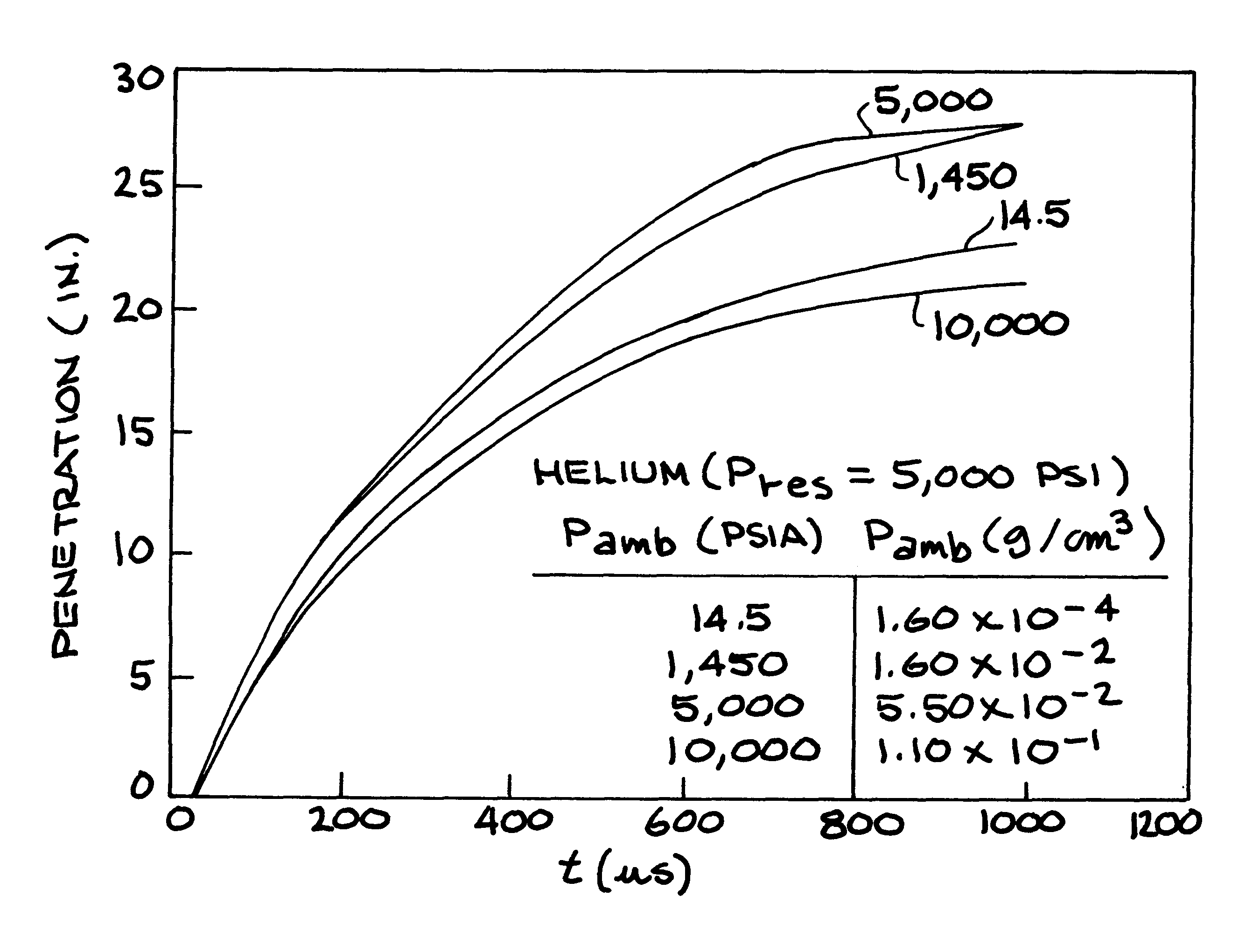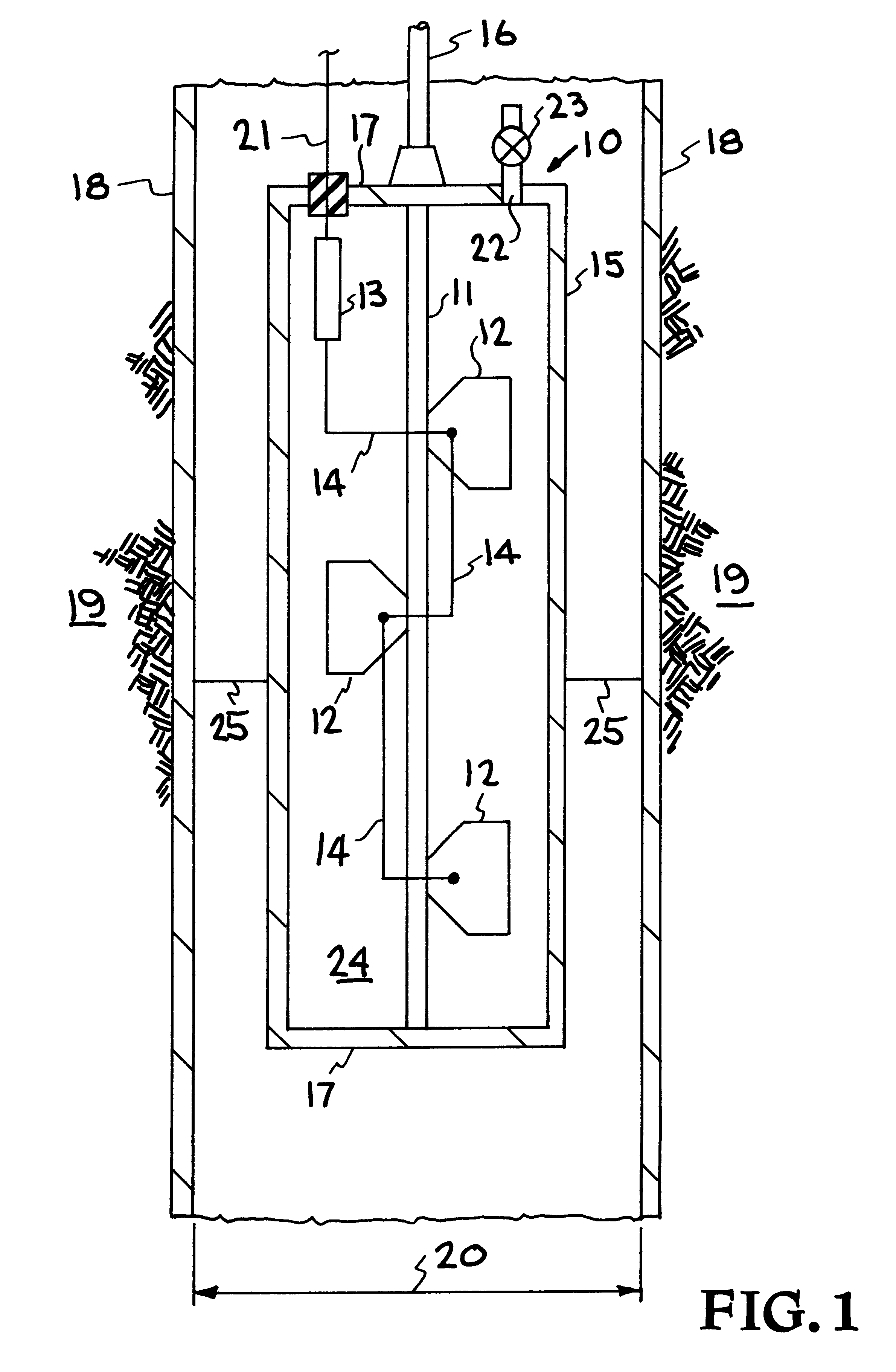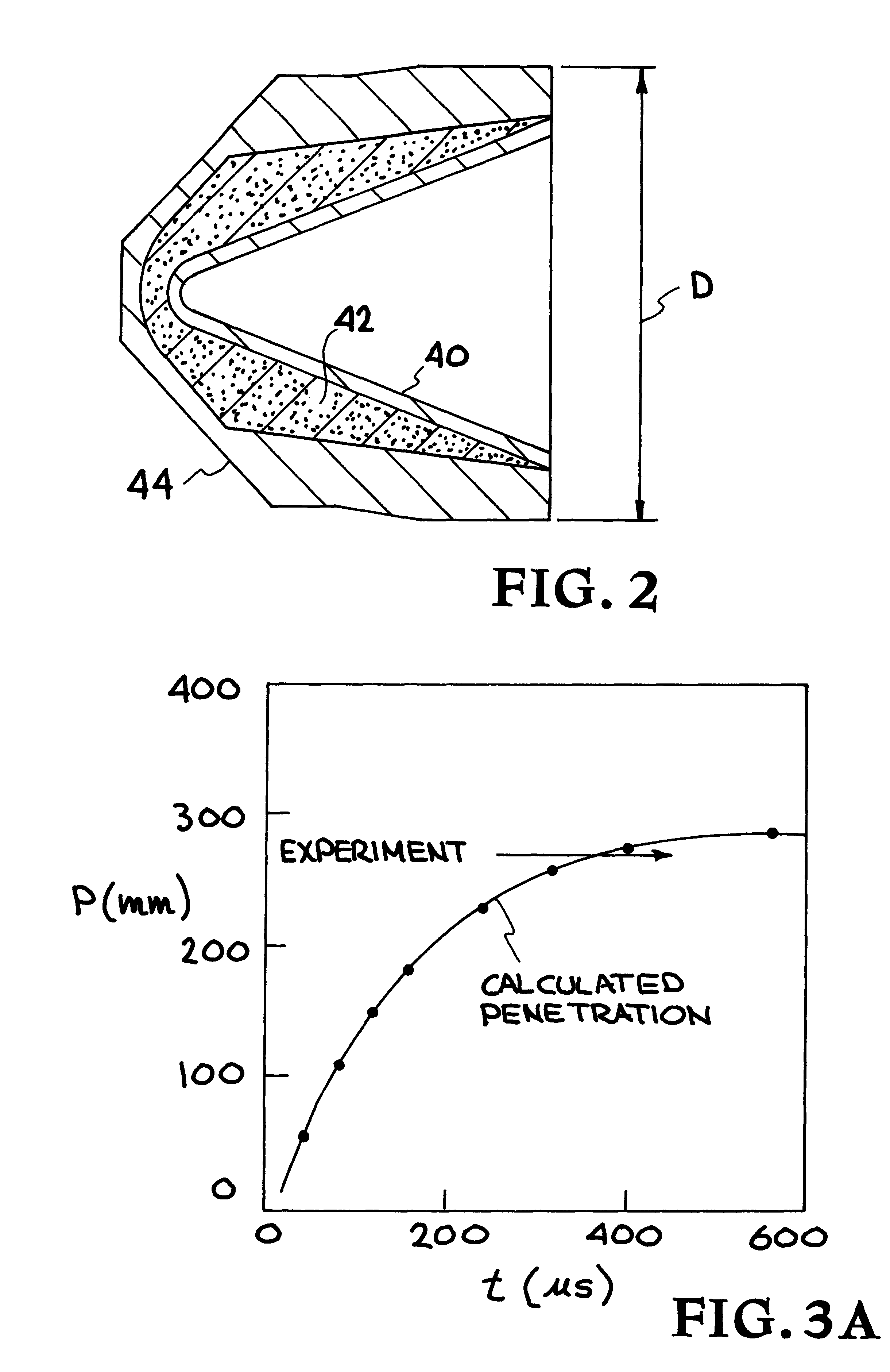Pressure enhanced penetration with shaped charge perforators
a perforator and charge technology, applied in the direction of explosive charges, weapons, ammunition projectiles, etc., can solve the problems of not producing a coherent, unidirectional penetrator, commercial perforators are rarely able to operate at more than 1 cd, and perforate the well casing
- Summary
- Abstract
- Description
- Claims
- Application Information
AI Technical Summary
Benefits of technology
Problems solved by technology
Method used
Image
Examples
Embodiment Construction
Shaped charges are fired at two (2) API Section 1 targets, each using 45 / 8" (OMNI) guns (12 SPF). Both concrete targets have been poured on the same day and cured for the same period. In one target the gun is operated with interior ambient air pressure and in the other a sealed 2,000 psi (138 bar) helium pressurization system is employed.
Using the 45 / 8" OMNI gun apparatus having means for maintaining the pressurized helium downhole, the average penetration from 37 perforations is increased 40.3% over that obtained with the conventional perforating apparatus and system (the standard deviation being 11.3% of the mean for the pressurized helium system and 12.9% for the conventional system).
It should be noted that such results exceed the predicted performance. (The predicted simulations are made for an ideal (axisymmetric) perforator.) The presence of the high-pressure light gas surrounding the jet inhibits instabilities that enable the jet to wander off axis and markedly decrease penet...
PUM
 Login to View More
Login to View More Abstract
Description
Claims
Application Information
 Login to View More
Login to View More - R&D
- Intellectual Property
- Life Sciences
- Materials
- Tech Scout
- Unparalleled Data Quality
- Higher Quality Content
- 60% Fewer Hallucinations
Browse by: Latest US Patents, China's latest patents, Technical Efficacy Thesaurus, Application Domain, Technology Topic, Popular Technical Reports.
© 2025 PatSnap. All rights reserved.Legal|Privacy policy|Modern Slavery Act Transparency Statement|Sitemap|About US| Contact US: help@patsnap.com



